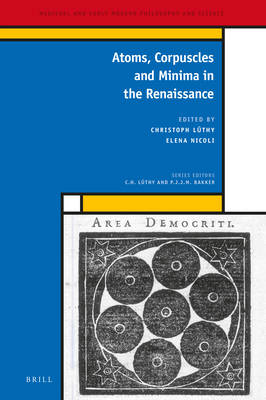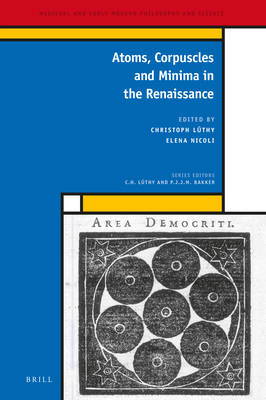
- Afhalen na 1 uur in een winkel met voorraad
- Gratis thuislevering in België vanaf € 30
- Ruim aanbod met 7 miljoen producten
- Afhalen na 1 uur in een winkel met voorraad
- Gratis thuislevering in België vanaf € 30
- Ruim aanbod met 7 miljoen producten
Zoeken
Atoms, Corpuscles and Minima in the Renaissance
€ 258,45
+ 516 punten
Omschrijving
The Renaissance witnessed an upsurge in explanations of natural events in terms of invisibly small particles - atoms, corpuscles, minima, monads and particles. The reasons for this development are as varied as are the entities that were proposed. This volume covers the period from the earliest commentaries on Lucretius' De rerum natura to the sources of Newton's alchemical texts. Contributors examine key developments in Renaissance physiology, meteorology, metaphysics, theology, chymistry and historiography, all of which came to assign a greater explanatory weight to minute entities. These contributions show that there was no simple 'revival of atomism', but that the Renaissance confronts us with a diverse and conceptually messy process. Contributors are: Stephen Clucas, Christoph Lüthy, Craig Martin, Elisabeth Moreau, William R. Newman, Elena Nicoli, Sandra Plastina, Kuni Sakamoto, Jole Shackelford, and Leen Spruit.
Specificaties
Betrokkenen
- Uitgeverij:
Inhoud
- Aantal bladzijden:
- 332
- Taal:
- Engels
- Reeks:
- Reeksnummer:
- nr. 36
Eigenschappen
- Productcode (EAN):
- 9789004528918
- Verschijningsdatum:
- 3/11/2022
- Uitvoering:
- Hardcover
- Formaat:
- Genaaid
- Afmetingen:
- 155 mm x 234 mm
- Gewicht:
- 635 g

Alleen bij Standaard Boekhandel
+ 516 punten op je klantenkaart van Standaard Boekhandel
Beoordelingen
We publiceren alleen reviews die voldoen aan de voorwaarden voor reviews. Bekijk onze voorwaarden voor reviews.







